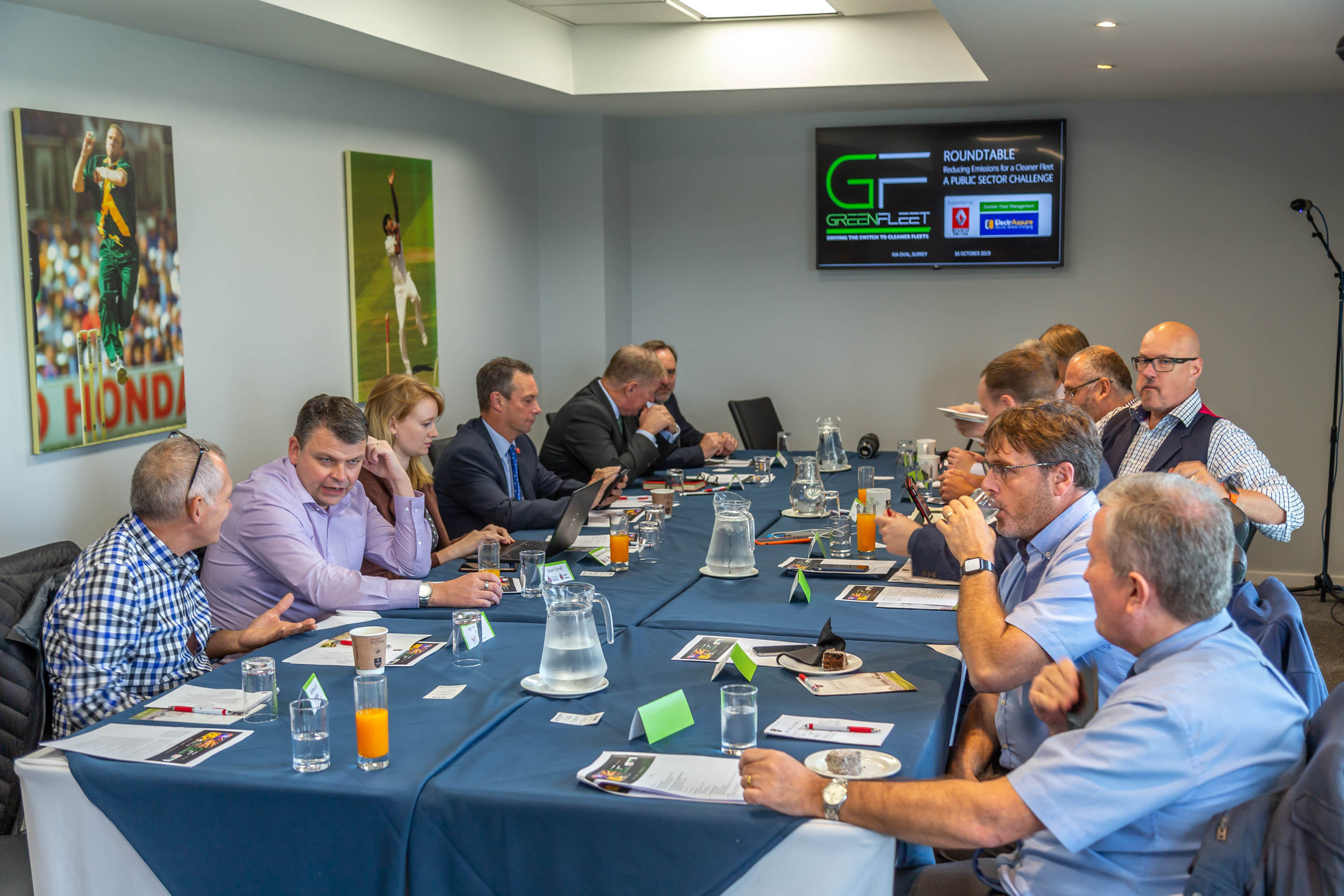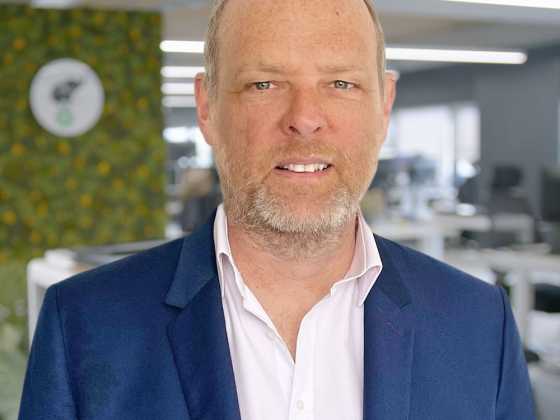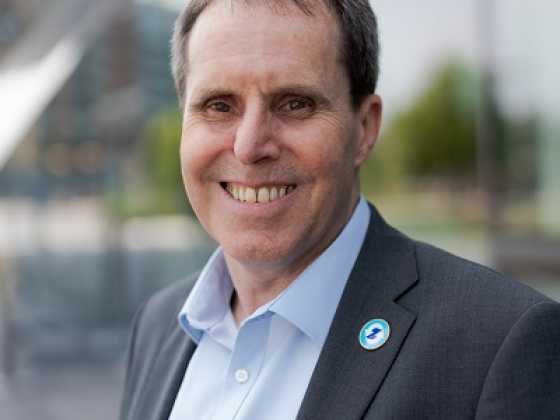Roundtable: Public sector fleets

Grey fleet is still heavily used in the public sector, and while it does need to be reduced for environmental and financial reasons, it often gets pushed down the priority list. This was highlighted at the public sector roundtable on 16 October at the Oval cricket ground
On 16 October, public sector fleet professionals gathered at the Oval cricket ground to explore the barriers and solutions to achieving a cleaner fleet. The topics covered all aspects of managing large fleets including clean air legislation, what to consider before introducing electric vehicles, transport policies and government and industry support.
For many, changing to a cleaner vehicle fleet is a standard part of every day. But for many, making the leap to zero emissions still requires a leap of faith; a leap some have yet to wrestle with, despite mounting pressure from central and local government.
Air quality challenges
The day began with the attendees looking at the rapidly changing political and regulatory frameworks that are demanding action. Air quality is getting worse with increased levels of nitrous oxide, carbon dioxide and particulate matter causing ever increasing respiratory problems. And now the issues are becoming even higher profile, with protestors making headlines on a daily basis. The public sector, which has to show leadership, has rarely been under closer scrutiny.
Michael Lawrence, fleet and passenger manager for the London Borough of Camden said that whilst targets for achieving environmental standards are held by others within the Borough, he is tasked to support the improvement of air quality as a key measure of his success. A recent deal with Ford for plug in hybrid vehicles utilising geo-fencing technology will enable his fleet to switch between electric and CNG dependent upon where they operate.
Interestingly, few around the table had specific targets for changing vehicles to electric, but summarised their work as reducing emissions where possible.
For the greater good
The attendees discussed links between poor air quality and public ill health. Simon Barr, public sector sales manager at Daimler Fleet Management highlighted data recently published to corroborate these links, showing that the “poorest communities are often the ones most affected by poor air quality” – supporting the notion that inner city fleet managers shoulder a greater responsibility to clean up their fleet as a result.
This brought about a discussion about the reasons for greening public sector fleets; are we doing this to improve air quality
or because of the climate emergency? Whatever the reason, is there sufficient funding available, now to make the necessary changes?
It was widely felt that despite the various political statements about stronger environmental protection and new legislation in the recent Queen’s Speech, little has actually changed on the frontline. Budgets are tight, and while electric vehicles have a role to play, they are not yet the single silver bullet to decarbonise all fleet vehicles.
Meaningful change
However, the public sector representatives had all made some move towards decarbonising the fleet and introducing a mix of hybrid, plug in hybrid and fully electric, as well as CNG and hydrogen vehicles. This speaks volumes about the tenacity and enthusiasm in the room to drive through necessary change. What emerged was a picture of hard working civil servants, doing miracles with precious resources to meet a range of key performance indicators within budget.
Brian Avery, service delivery manager for Surrey Police set out what he has introduced into his fleet which includes a wide range of vehicles and fuel types. We all agreed that whilst the financial and regulatory regimes present challenges, they do not prevent meaningful changes being implemented.
Vehicle charging
Alun Davies, operations director at ElectrAssure took the delegates through a masterclass on vehicle charging and dealt with a number of enquiries about how to equip old buildings and facilities with adequate power to fuel a fleet of electric vehicles.
Involving a chargepoint installer early is key to success. Alun said: “We have good relationships with the Distribution Network Operators (power companies) and so early sight of plans can help us both ensure we find the most cost effective solution, which in many cases is to simply run a new supply to the chargers rather than burdening an already creaking electrical supply. This is significantly cheaper than upgrading existing infrastructures.”
De-risking new technology
Fleet managers need to embrace new technology but fear making the wrong decision. To address these concerns, the discussion examined how introducing new technologies can be de-risked; especially important when spending tax payers money. Leasing vehicles rather than buying them outright is one such way.
Simon Barr said: “It is important to make the right decision for your organisation. Manufacturers and suppliers are more than happy to be involved in helping customers to select the right vehicles for the right job, and to fund them in the most suitable way. Manufacturers want to make these new EV projects work.”
Simon went on to say that particularly in the electric vehicle LCV market, which is relatively new, manufacturers want you to be considering a change to their low emission vehicles and are therefore very flexible and accommodating when it comes to demo initiatives.
Wider transport policies
Making changes to fleet vehicles is only part of the corporate challenge and so discussion turned to the wider transport policies. Procurement and grey fleet miles were discussed at length.
The delegates agreed that smart procurement is a necessary part of the process to safeguard public money. But this risks it all being about the lowest price, according to Roy Finan of the London Borough of Hammersmith and Fulham. Local authorities are at liberty to rank environmental criteria as they see fit and may still place a low weighting on this vital criteria.
In terms of grey fleet miles, Ed Potter, head of environmental services at Cherwell District Council spoke about how he had made a proposal about pool car use but it was felt to be too difficult to implement compared to other things that were going on.
It was accepted that grey fleet miles do need to be reduced for environmental and financial reasons, but grey fleet does get pushed down the list of priorities. Even accessing data about current grey fleet miles has proved to be a challenge.
Any move to reduce emissions and grey fleet vehicle use has to be made easy for employees, according to Simon Barr. “As soon as you start making it difficult, that’s when staff will gravitate towards using their own vehicle,” he said.
Staff can be incentivised to use pool cars, low emission vehicles and public transport. Using carrots rather than sticks was felt to be the right way to tackle grey fleet. Businesses can also make the whole thing fun; Daimler Fleet Management has experience introducing electric pool cars into local authorities and seen people get upset if they can’t book an EV because they are more fun to drive.
As Roy Finan rightly said: “The days of the “perk” of driving your own car for work and getting a healthy allowance for doing so, are well and truly numbered.” Environmental and fiscal policies need to combine to reward good behaviours, and a collaborative approach across organisations is a must.
It was then quickly established that little thought or effort is put into considering the impacts on how staff members get to work and the subject of encouraging use of pool cars and public transport was discussed at length. It was the general feeling that a process of consultation and taking people along on the journey are all important.
Working together
As we move towards a period of deep introspection about how we operate public bodies and local authorities, caused by increased legislation and environmental pressure, it was refreshing to see how so many have made inroads, but sobering to think that so much still needs to be done.
The key to success seems to be about having an overarching strategy, committed people and the resources to embed change. Most important of these are the people. It takes commitment from the top, knowledge right through the organisation and behaviour change programmes to de-mystify and inform. It was agreed by us all that picking off the low hanging fruit of identifying shorter journeys, enthusiastic drivers and putting in the right charging infrastructure are essential ingredients. Fleet managers cannot make change happen in isolation. It takes the teamwork of the right suppliers, who understand their business and yours to be able to bring successful projects to fruition.






